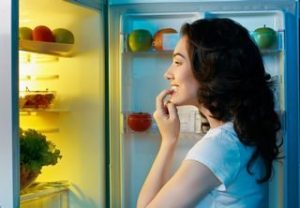
Motherhood Moment Q&A with Dr. Kantor
What is the relationship between sugar cravings and addiction or depression?
Research on mice has shown that their body reacts to sugar through opiate receptor binding. The opiate receptors react to sugar just like it does to addicting substances like both drugs and alcohol, which also increase the opiate receptor binding activity. If an individual is in recovery from addiction they often have a “transfer addiction” meaning they eat and use food in place of the once abused substance, typically resulting in weight gain and depression.
Encouraging a balanced diet that consist of foods that do not stimulate the opiate receptors will help reduce relapse, and symptoms of depression.
How can someone break the habit of giving in to sugar cravings?
Eliminate foods that stimulate the opiate receptors, like processed sugar, sodas, juices, alcohol, refined grains, gluten, dairy and processed trans fatty acids typically found in packaged snack foods like cookies, chips and candies. Instead consume healthy fats from oils, avocados, nuts, and seeds, quality protein from eggs, poultry, fish and beef, and most importantly 9-11 servings of vegetables and low sugar fruits like berries. Hydration from high quality water can also help reduce inflammation in the body and suppress opiate receptors by helping manage our insulin mechanism. My research shows the best water is hydroxide rich alkaline water, AQUA-OH!. This water is all natural (made from pure limestone), eliminates the acid instead of just buffering it like other alkaline waters. It does this by the OH (hydroxide) searching for and combining with H+ (which causes acidity), which causes acidosis, which causes inflammation. By using AQUA-OH! we reduce the acid and greatly reduce the inflammation which adversely affects many diseases including depression. It also comes as a concentrate so it is 250%+ less expensive than other alkaline waters and works more efficiently.
How can we make sure to have a balanced diet with sweets that doesn’t go overboard? Practice macronutrient-counting, aim for a diet that is 40-50% healthy fats, 20-30% complex carbohydrates and protein, 25 grams of fiber and less than 2500 mg of sodium. There are free nutrient trackers that can be eye opening, sometimes we think we are eating a balanced diet and then find that it is low in fiber, protein and high in processed fats and carbohydrates.

